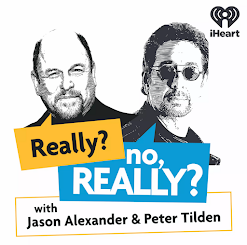"Is there any academic literature on stock photos? I'm aware of amusing curations (women laughing alone with salad etc) but also curious about the interesting linguistic thingmes it brings up when you search for a word or phrase and it brings up unexpected stuff. I always find myself wondering about any future info-archaeologists and what they might make of how we see things / ourselves, through stock images ;)"
 |
| Flickr picture credits: Left: Kidney with 'omnions' by duncan, Middle: kidney medium by Yersinia, Right: Kidney stones by Trevor Blake |
"Years ago I helped the then editor of our research magazine (Research Matters, from Diabetes UK) find some illustrative images to go with short summaries of our various bits of research. I remember in particular looking for things that conveyed 'kidneys' to match the section on our kidney research.Picking up on the last point there it also crossed my mind that selecting images for an article (and thinking laterally about words, phrases and what the images say) is a teeny, tiny bit like being a film music composer, in the sense that you're 'writing to text' (as opposed to 'writing to picture' as in film) and can choose to use a straightforward image that's clearly aligned to the text (perhaps equivalent of using happy music in a happy scene, or sad music in a sad scene) or selecting something a little more obscure to highlight an aspect of the text that's perhaps not explicit.
There are some standard-issue visual tropes for kidneys, including pictures of actual kidneys (either photographs or drawings, including the urinary system), kidney-shaped metal dishes, kidney beans and even, if you're so minded, steak and kidney pies.But the concept of kidneys can also be put across by images of clear water - after all the job of the kidneys is to filter and clean blood, and conserve things that the body wants to keep. Even the concept of a fuse might be used in relation to the role the kidneys play in blood pressure and how this can damage them. You might even get away with 'balance' in that our kidneys keep everything in order.
I found that being in the role of someone who picks the pics made me think much more laterally about images in general, which I'm sure is all to the good."
Source: Building the picture pipeline - free images for use in healthcare and medical research #scicomm #nhssm (Sunday, 20 May 2012)
Here's a lovely example of a piece of music matching something less obvious in the scene (and perhaps making it more obvious to the audience) -
"One of the classic examples of this kind of [film music] writing is found in David Raksin's score to Force of Evil discussed in some detail in chapter 3. In the final scene the main character, Joe (John Garfield), is seen running in the street, then along a great stone wall and down a huge flight of stairs. Yet the music here is not "running" music -- Raksin has scored the emotional rather than the physical character of the scene. Joe has been running, figuratively, throughout the film; it is only now, as he begins the search for his dead brother's body, that he finds any sort of quietude. Raksin reflects this psychological point in his slow music for this sequence."Further reading
Source: Roy A Prendergast The Aesthetics of Film Music (mystery online PDF)
I like the genre of reframing of pictures, in the contextual 'caption competition' sense rather than actual frames. Here are a couple of examples I've noticed recently that have amused me.
44 Medieval beasts that cannot even handle it right now Buzzfeed (28 August 2014)
“We’re Fine Here, How Are You?” Normal Moments In Art History Where No One Is About To Get Murdered The Toast (16 June 2014) - features art nudes and so, depending on your workplace, this one might not be safe for work.





No comments:
Post a Comment
Comment policy: I enthusiastically welcome corrections and I entertain polite disagreement ;) Because of the nature of this blog it attracts a LOT - 5 a day at the moment - of spam comments (I write about spam practices,misleading marketing and unevidenced quackery) and so I'm more likely to post a pasted version of your comment, removing any hyperlinks.
Comments written in ALL CAPS LOCK will be deleted and I won't publish any pro-homeopathy comments, that ship has sailed I'm afraid (it's nonsense).